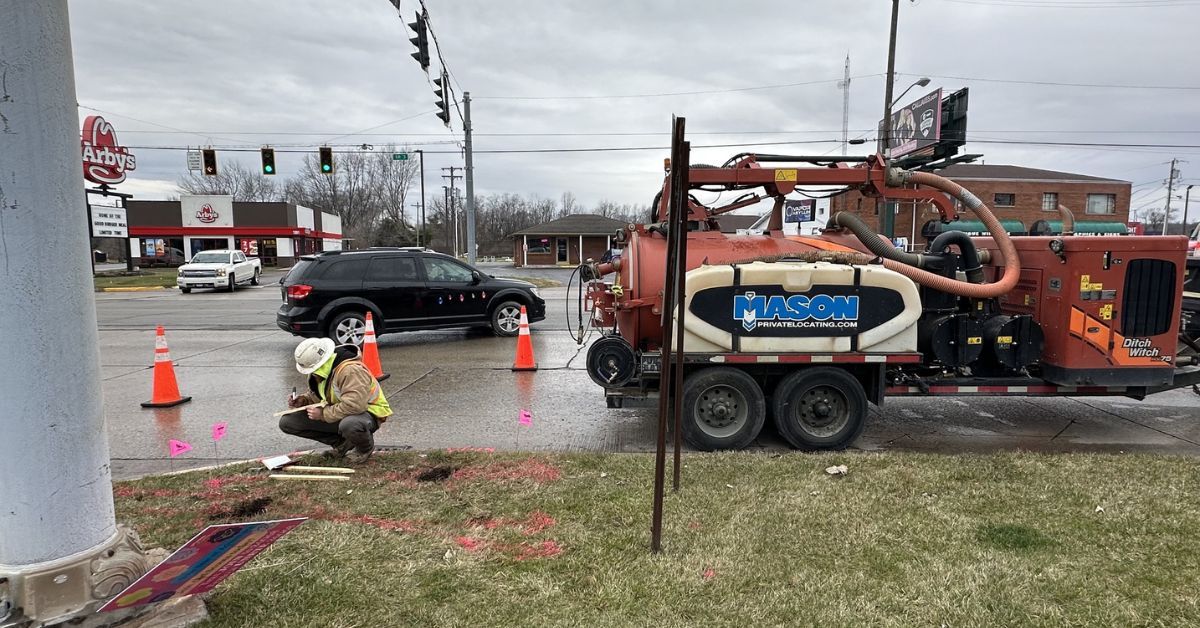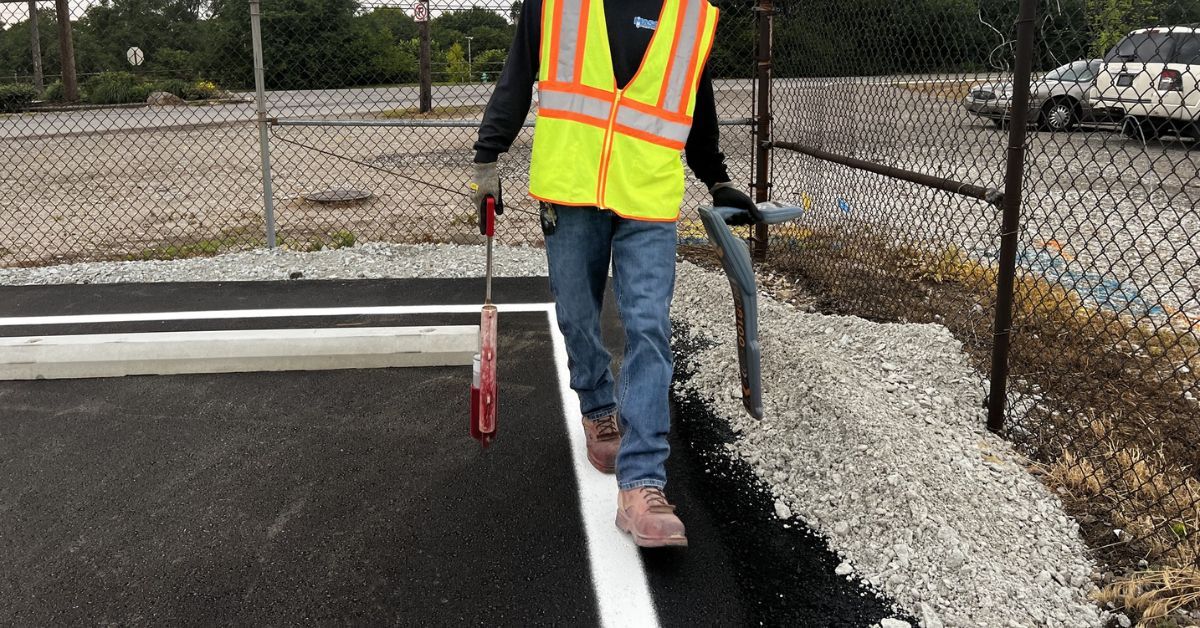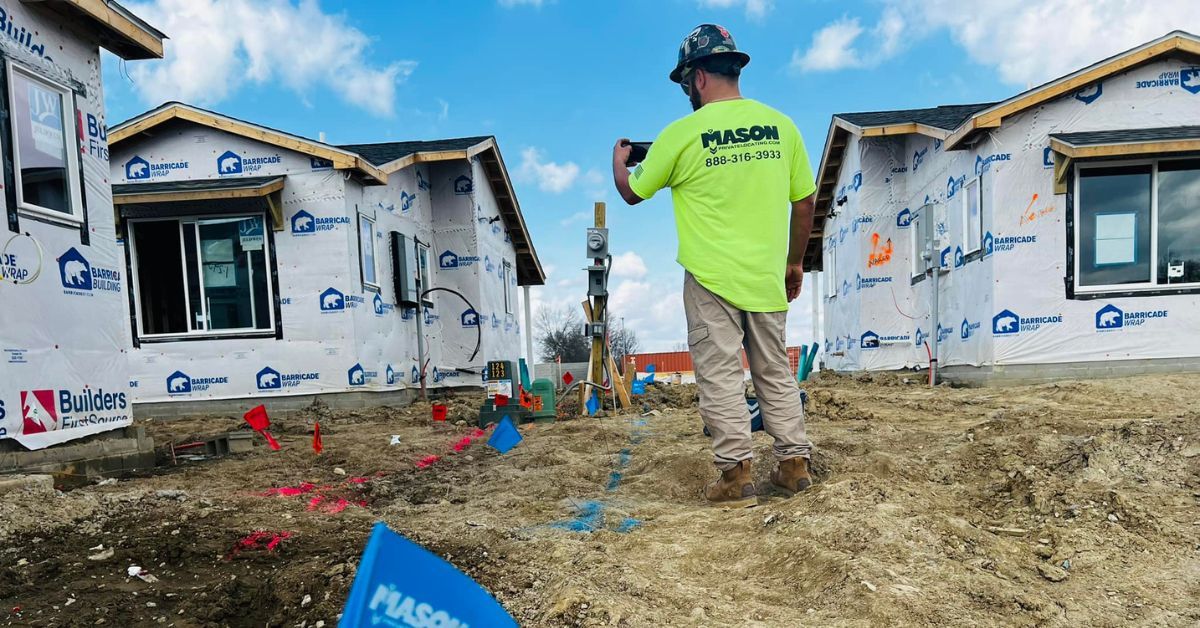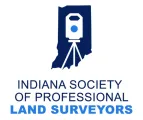
Underground utilities are the lifeline of modern infrastructure, delivering essential services such as gas, water, electricity, and communications. However, they also pose a risk to anyone digging nearby, whether it's a construction crew, a homeowner renovating their property, or anyone else.
Diggers must understand the risks of excavating near and around buried utilities to ensure project safety and prevent service disruptions. In this guide, we'll look at the most common risks associated with underground utilities and how services like subsurface utility engineering mitigate these risks.
#1. Damage to Utilities
Damaging underground utilities is one of the most immediate risks during excavation or construction. Striking a water pipe, severing an electrical cable, or puncturing a gas line can disrupt essential services for entire neighborhoods or businesses. These incidents create widespread consequences, including service interruptions, unplanned downtime, and expensive emergency repairs.
Utility strikes are one of the most common causes of service outages nationwide every year due to diggers not planning carefully enough. Professionals and property owners who plan to excavate into the ground must know the exact location of any service utilities to ensure a safe and successful project.
#2. Safety Hazards
Hitting underground utilities during construction isn't just inconvenient for diggers and the surrounding community due to service outages; it also poses a serious safety risk to workers and nearby residents. Damaging gas lines can cause leaks, which may create explosive conditions, while live electrical cables may result in severe injuries or fatalities.
Utilities such as high-pressure pipelines heighten these dangers further. OSHA emphasizes that improper handling of underground utilities is a leading cause of workplace accidents during excavation. Adequate training, utility location services, and strict adherence to safety regulations are vital to safeguard workers and the surrounding community.
#3. Project Delays
Another risk associated with underground utilities is not a safety one but an efficiency one, as striking utilities can significantly delay projects and cause logistical headaches. Unexpected encounters with undocumented utilities halt progress, leading to construction delays. When teams discover utilities mid-project, they must pause and reassess designs to accommodate these obstacles.
Delays extend timelines and cause disputes between stakeholders. Investing in pre-planning services, like utility locating and mapping, ensures you won't be surprised by what's underground and can complete your project on time.

#4. Increased Costs
When diggers damage or discover utilities, the financial consequences are significant. Teams must bear the expense of emergency repairs, redesigning project plans, and potentially facing penalties for service disruptions.
Contractors who fail to factor in existing utility infrastructure may see project budgets spiral uncontrollably. Proper utility locating and engineering services minimize these financial risks by offering precise mapping data early in the planning process.
#5. Environmental Damage
Striking underground utilities, particularly gas pipelines or sewage systems, can cause environmental contamination. Leaking oil or gas can pollute soil and water, while ruptured sewer pipes introduce harmful waste into ecosystems.
If such contaminations occur, there will need to be extensive clean-ups by environmental experts. The contractors responsible for the damage typically bear the substantial costs of these services. Preventing environmental incidents relies on detailed mapping, adherence to environmental regulations, and using advanced utility-locating technologies.
#6. Legal Liabilities
Accidentally striking a utility line creates more than physical damage. It exposes your company to serious legal consequences. Regulatory bodies impose penalties for non-compliance, including hefty fines for environmental contamination or safety breaches.
Beyond financial penalties, legal disputes can damage your company's reputation. A simple mistake of damaging a buried utility line could mean months or years of legal headaches for your company. Smart contractors invest in utility locating services upfront to avoid such conflicts.
#7. Inaccurate Records
Outdated or incomplete utility records are a major source of confusion during construction. Over time, other construction crews and utility maintenance teams may install, relocate, or abandon utilities without proper documentation.
Relying solely on historical records leaves teams vulnerable to unforeseen challenges. Professional utility locating services offer crucial protection through physical verification. By physically locating utilities with advanced tools and verifying their positions, professional services help contractors gain confidence in their plans.

#8. Construction Rework
If construction crews do not accurately identify and map utility service locations before digging, they may stumble upon them during construction. Finding utilities during active construction forces teams to reposition infrastructure and adjust their work plans mid-project.
#9. Lack of Coordination
Finally, poor communication between stakeholders, including project managers, contractors, and utility companies, is a root cause of many utility-related setbacks. Without clear coordination, information gaps lead to mistakes such as unmarked utilities or improper site preparation.
Establishing a clear chain of communication ensures everyone remains informed. Collaborative platforms, periodic updates, and shared utility data can resolve coordination challenges.
How Subsurface Utility Engineering Prevents Risks
One way to avoid all these utility risks is with subsurface utility engineering (SUE). SUE is a proactive method that identifies and maps underground utilities accurately before construction begins.
By using advanced investigation techniques, SUE services prevent project delays, safety risks, and unexpected costs. This process ensures that diggers address potential conflicts with underground utilities early, enhancing safety and efficiency throughout the construction process.
Understanding SUE Quality Levels
SUE is divided into four quality levels, each offering different levels of precision depending on project requirements. The project outline, the digging site, and available utility information will determine level of SUE your project requires.
- Quality Level D: Relies on existing records and site inspections to gather utility data.
- Quality Level C: Involves surveying visible above-ground utility features for more accurate information.
- Quality Level B: Uses electromagnetic locating systems to perform non-intrusive investigations of underground utilities.
- Quality Level A: Provides the highest level of accuracy by physically verifying utility locations through vacuum excavation.
This systematic approach significantly improves safety, reduces costs, and streamlines workflows before construction starts.
Projects Built on Confidence Start With Comprehensive Planning
Understanding and addressing the risks of underground utilities is essential for successful construction and excavation projects. Stakeholders with accurate data can make informed decisions, ensuring safety and efficiency from day one.
Mason Private Locating (MPL) can help ensure the safety and efficiency of your project with our SUE Field Services. Don't leave your next project to chance. Contact us today to explore how SUE can enhance your project outcomes, save millions in costs, and protect your team and infrastructure.













